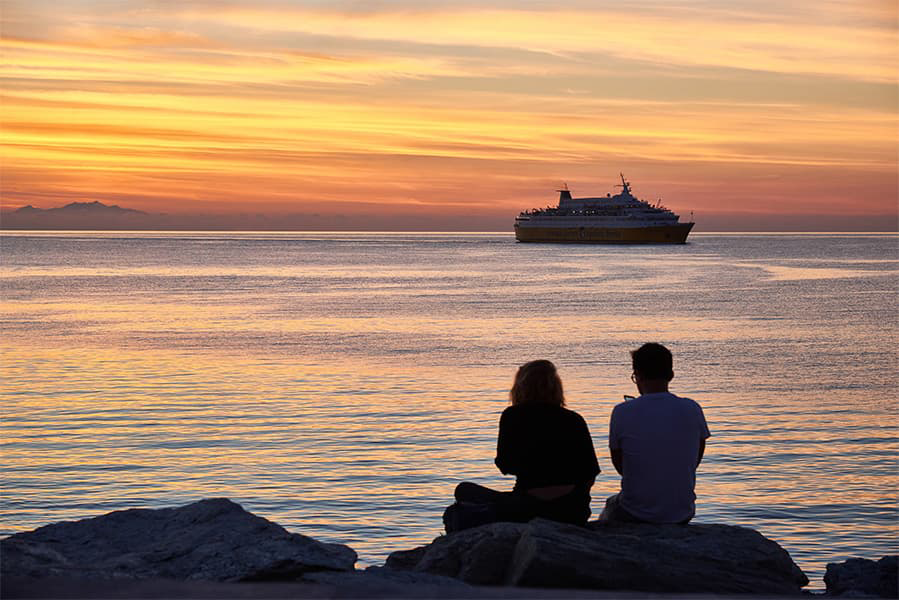Porto Torres – Livorno
Ferries to Italy
Porto Torres – Livorno
Ferries to Italy

At Direct Ferries you can compare Sardinia to Italy ferries on the Porto Torres Livorno ferry route with our quick and easy live availability and best price search.
Using our Fare Search you can check real time prices, availability and book ferries from Porto Torres to Livorno or alternatively compare this route or the ports with other options.
Choose Porto Torres Livorno or an alternative ferry to Italy from our Fare Search now and discover how easy it is to make your ferry reservation.
More routes than anyone else.

Compare fares, times & routes in one place.
Change plans easily with flexi tickets.

Book e-tickets & manage trips in-app.
Live ship tracking & real-time updates.

Top-rated customer support when you need it.
The Italian city of Porto Torres is located on the north west coast of the island of Sardinia. It is roughly 25 km to the east of the Gorditanian promontory and also on the bay of the Gulf of Asinara. There are a number of things to see in the city, the most popular being the 11th century, three naved, Basilica of San Gavino which was built using only precious hardstones like marble, porphyry and granite, and is Sardinia's largest Romanesque church. Also popular are the Catacombs of Tanca Borgona which are man made underground passageways built for religious practice.
It is the second best served port in Sardinia, after Olbia, and links the island to Genoa, with a crossing time of 11 hours and 30 minutes. There are also services to Civitavecchia (7 hours and 15 minutes, Barcelona (11 hours and 15 minutes), Ajaccio (3 hours and 30 minutes), Propriano ( 4 hours) and Marseille (17 hours).
Livorno is an Italian city and port that lies on the west coast of the country and is frequently visited by cruise ships as it is an important gateway to the famous and picturesque Tuscany region. Many of the city's visitors do so on their way to visiting other destinations in the region including Florence, Pisa, Lucca and Siena. The city was designed during the Italian Renaissance when it was ruled by the Grand Duke of the Medici family but additions were made at the end of the 16th century by Bernardo Buontalenti. Overlooking and protecting the city's port is a fortress and like many other Italian cities, Livorno was once surrounded by walls that were constructed to protect it from marauders. Many parts of the city's ancient walls remain intact and are a popular attraction with visitors.
Livorno's port has good passenger facilities and includes bars, restaurants, banks and is wheelchair accessible. Ferry using the port depart to Bastia, Olbia, Golfo Aranci, Cagliari and Tunisia.